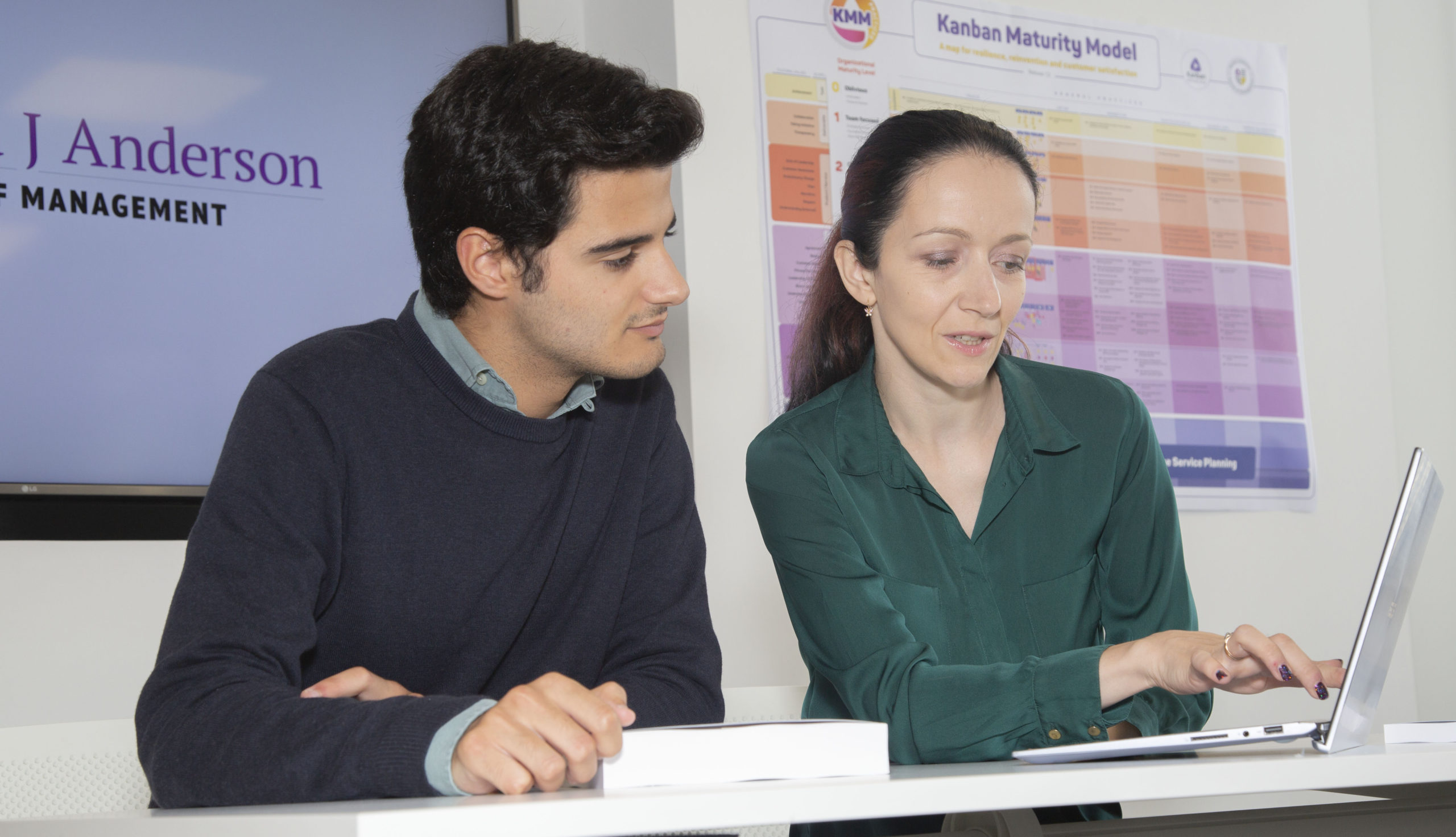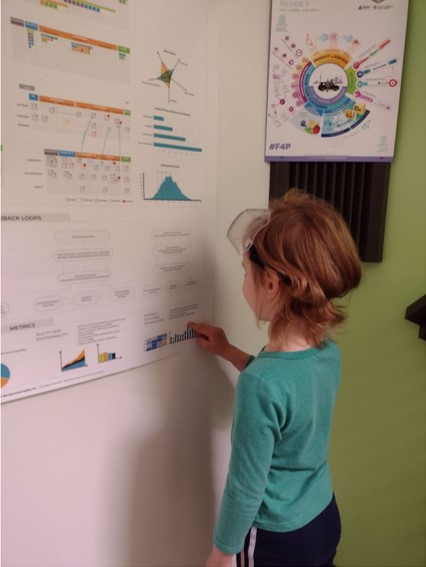Part 1: Meet Anna and find out how she started with Kanban
Do you have agility initiatives in your organization? You may or may not be satisfied with its current results, but nevertheless you want to learn more about the Kanban Method. We will help you with that! We talked to Anna Radzikowska, Accredited Kanban Trainer and Certified Kanban Coach that specializes in teaching Kanban world newcomers asking her how to start with Kanban.
Read this series of interviews and find out how should you start your Kanban journey, what problems you may face and how to overcome them.

Anna Radzikowska, Accredited Kanban Trainer, Certified Kanban Coach
- 5 years of Kanban experience
- More than 150 students taught
- Over 13 years of experience in finance, training, and project management in the public sector, international enterprises, and running her own business.
- Being an ACCA (Association of Chartered Certified Accountants) member helps Anna to better understand businesses and their financial aspects.
- Speaker at Kanban and Agile conferences (Product Development Days, ACE! Conference, Agile&Automation Days, Aginext, FlowConf).
- Happy wife, mother of 5-years-old Hela, and owner of Banana, the Dalmatian-mongrel.
- Anna`s passion is classical, pen&paper RPG (Role Playing Games), which she believes, are also a way to develop herself as a trainer.
Anna, how were you getting started with Kanban?
I heard the word “Kanban” for the first time many years ago and it was not working in project management, product building, and not even in IT. At that time I was studying for my finance accreditation, and I learned about Kanban from inventory management. They use Kanban as a pull system there. When I really started learning Kanban was when I started to work in Project Management. That`s why I would say that it was my colleague who introduced me to Kanban back then in 2016. We couldn`t apply any other method, so we decided to try Kanban. We were browsing the Internet looking for the information and that`s how we found Kanban University.
First, we were learning from the materials, available on their webpage. Then we reached the point when we decided to read a famous Kanban blue book and take a KSD (Kanban System Design) class. After that we just started applying Kanban, exploring more and more on the way. Moreover, our trainer didn`t allow us to take the second part of KMP (Kanban Management Professional path) straight away. That`s why we waited for half a year to get more Kanban experience and only then we took the other part of the KMP path – KSI class (Kanban Systems Improvement).

Anna: “I can say that Kanban helped not only to make the work to flow smoothly, but it also changed the mindset of people” .
I was the Product Owner back then. It was a bank, but I worked in the IT and Finance sectors. I had two teams that I was working with around completely new projects. I convinced one of the teams to start using Kanban from the very beginning. We designed our system, created our real physical pre-covid Kanban board that we were improving step by step on the way. When we noticed that something is not working as we thought it would, we just changed it to make sure that what we do on the board reflects our real processes.
When did you notice the first outcomes from having a Kanban system in place?
I would say we have noticed the benefits of having the Kanban system when we had an issue with releasing our features. We had some blockers that were stopping us. And we couldn`t do any work till the very moment when it was supposed to be released. Having our Kanban board helped us to visualize what was going on. We could show our stakeholders what was holding us back and which previous stages of the working process are blocked. It helped us to communicate where the problem was so that we could do something about it rather quickly. Otherwise, all the processes could become a huge bottleneck themselves. To sum up, the first benefit was pure transparency and visualization. With the WIP limits applied we could see where the work was stuck. Later when we removed blockers and the work started to flow, Kanban helped us with planning. It brought peace and a stable pace in our process.
However, that was not all the benefits that I observed. We had to wait to see another one. After 1,5 years of working on this project, I started to observe how people put in life the principles of the acts of leadership at all levels. I wasn`t sure at the beginning what would be the evidence of it. But after a year and a half, some situations demonstrated that it happened. That`s why I can say that Kanban helped not only to make the work to flow smoothly, but it also changed the mindset of people. Their approach changed, they started behaving like the owners of the process and accepted the responsibility for what they were doing.

Anna: “Probably, teaching is something that has always been in my blood. Even as a kid, I was dreaming to become a teacher”.
How did you become a trainer?
Being a teacher is my profession. About 13 years ago I was teaching history to children. Then I was teaching adults the basics of accounting, finance, and risk management. I like teaching. So, when I moved to the IT world, I started learning more about agile and teaching others. When I explored Kanban, I started to organize workshops for my colleagues. I was showing them how they could use Kanban in their work, we did some simulations. And then I decided to become an AKT (Accredited Kanban Trainer). Probably, teaching is something that has always been in my blood. Even as a kid, I was dreaming to become a teacher.
Who do you think will benefits from Kanban the most? What industries or professions?
The short answer is – everyone. But being more specific – the most benefit from Kanban Method would get the knowledge work industries and those, who deliver services. You can apply Kanban Method to any intellectual work when you mostly use your brain and your computer. I`m talking about the Kanban Method, not the Toyota-type of Kanban for manufacturing. Of course, Kanban has deep roots in IT, XIT, engineering, and maintenance. However, you can see in multiple case studies that Kanban Method can be applied anywhere – in marketing, finance, HR, and so on. There is a lot of proof that it is working successfully anywhere where you deal with customers` demands and services.

Anna: “You can see in multiple case studies that Kanban Method can be applied anywhere – in marketing, finance, HR, and much more”.
Is it true that once you have tried Kanban you can never go back?
Normally, I`m trying not to use strong words like «never» and «always». However, in this case, based on my experience I would say it is true, Kanban is very addictive. Of course, for those who are applying the Kanban Method. Those, who think that Kanban is just a board and nothing more may be frustrated, it may not work for them. But those who really apply all the basic practices, use Kanban values and principles, most likely will never stop doing it. In my case, I can`t imagine living without Kanban. I think I`ve “kanbanized” all the aspects of my life. I know how it sounds, but it really gives you peace in your work, stability, and predictability in what you are doing.
My 5 years old daughter loves Kanban. Last year during the pandemic she had to stay at home doing her online kindergarten. So, we needed to somehow organize her time. It was not easy to manage a kid at home for a whole 3-4 months. Kanban helped her to put all her things together and organize her days. She had her board and was doing her tickets herself with pictures from cartoons or just drawing. It helped her to know when was the time for the drawing class, when the English class was, or when she could watch a cartoon or play with Mom and Dad. At first, I was reminding her to move the sticky notes. But once I forgot and she ran to me saying “Mom, we didn`t move the sticky!”. So, just after few days, she had got used to it herself.

Anna: «Kanban helped my 5-year-old daughter to organize her days during the pandemic. At first, I was reminding her to move the sticky notes. But when I forgot, she ran to me herself saying “Mom, we didn’t move the sticky!”. Just after few days, she has got used to Kanban”.
Continue reading:
Learn more about Kanban studies in Kanban Maturity Model book or get access to full book content online using kmm.plus. Attend training at the David J Anderson School of Management to learn more about advanced Kanban studies and how they can help your business, or find your local trainer at Kanban University to start your Kanban journey.

Recent Comments